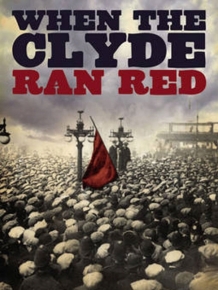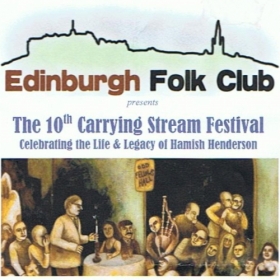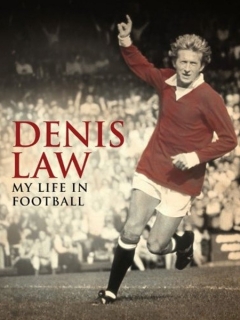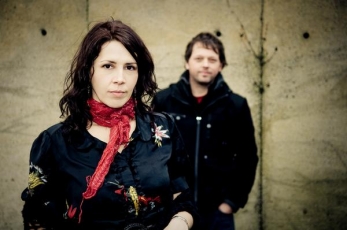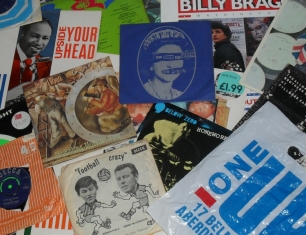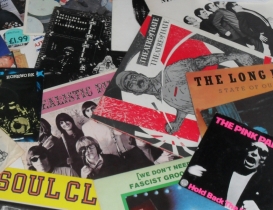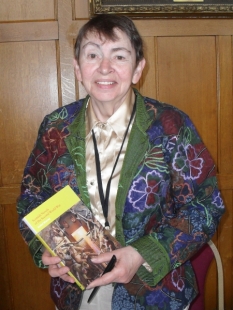Some weeks ago, Voice’s David Innes went to the very scary outer limits of his IT abilities and downloaded Queen of Denmark by John Grant from the i-Tunes Store and lovely it is too. It wasn’t always that easy, but it used to be a lot more fun. Fred Wilkinson also chips in.
I can almost date it to a day in November 1971 when my rock ‘n roll obsession finally took hold. It’s refused to let go ever since. It was the day that my first cassette recorder arrived from the wifie across the road’s clubbie book.
That was, I suppose, ‘hardware’, and ‘software’ in the form of a C90 cassette tape which meant that a whole new world opened up for me.
Recording Pick of the Pops from the radio or Top of the Pops from TV, using a microphone held close to the sound source, obviously, was a wonderful way of picking up music for free. But for every Heart of Gold there were three Johnny Reggaes and the charts were crammed with Chicory Tip and David Cassidy rather than Family and Deep Purple.
In the small country town in which I was raised, there was no specialist record shop. Haberdasheries, draperies, gents’ barbers, ironmongers and butchers abounded, but for the aspiring vinyl junkie, the banqueting hall consisted of half a dozen racks of cardboard LP sleeves at the back of Clydesdale TV. This chain of Caledonian electrical shops was much more interested in knocking out hoovers, fridges and colour (aye, colour) tellies to upwardly-mobile council house tenants than offering hirsute, denim-clad Banffshire youth the heavy, cred-establishing, underground sounds of the day.
The stock rarely rotated. I’m convinced that Atom Heart Mother was in the rack for so many years that the cow on the sleeve aged to the extent of having to be removed by the local rendering company. The single copy of CSNY’s Four Way Street was on display for so long that a traffic-managing one-way system was installed. Had I not eventually taken pity on a lone copy of Jimi Hendrix at the Isle of Wight (not his best) its display longevity would only have been matched by the somewhat less-desirable Jimmy Hendry at the Isla Hotel.
It was a rare treat then, to visit Barr Cochrane in Elgin and set eyes on such semi-mythical albums as Argus, Fog On The Tyne and Machine Head information about which we’d devoured voraciously in Melody Maker and Sounds and which were available to us via mail order from some Branson gadgie and his Virgin Records. The journey home by bus passed in a flash as we devoured every syllable of the sleevenotes of spanking new King Crimson and Atomic Rooster purchases.
Even more decadent were occasional outings to Aberdeen, beyond the fortnightly excursions on the supporters’ bus to watch the thrilling early 70s Dons. There, there were teeming racks of LPs of which we had only heard the names and had never eyeballed the covers.
One Up took specialist record supply to a new level in the city, with knowledgeable, sociable and friendly staff who shared our passion
We sought out Bruce Millers and Chalmers and Joy, both emporia of rock then in George Street, Telemech in Marischal Street and the ever-reliable Woolworths, where bargains could often be had due to a bizarre pricing regime which more than once saw credible chart albums reduced to 50p because the wifie in charge confused James Last with James Taylor or Frankie Vaughan and Frankie Miller.
Who can remember, at the less-salubrious end of George Street, then a respected shopping thoroughfare and still the main A96 into the city, a down-at-heel, nondescript shoppie in which there was an ever-present pungent aroma of exotic smoking materials and where a milk crate of bootlegs resided, literally, under the counter? Aberdeen’s original Virgin Records store!
A few of us moved into the city in the mid 1970s and we became spoiled for choice. The Other Record Shop became legendary, especially once the 76-77 revolution made buying 45rpm singles essential again and Happy Trails was always good and far enough off the beaten track to indulge that guilty Grateful Dead collector’s reflex.
My Voice colleague Fred Wilkinson also recalls Thistle TV’s part in youthful vinyl junkiedom…
“I got tel’t that the scary wifie that worked in Thistle TV wis Evelyn Glennie’s ma. Glennie wis the proprietor’s name for sure, and the wifie did resemble Evelyn in some wyes.
“She didna like maist punks, so I’m nae sure why she ordered in punk singles, though it possibly explains why there wis a crackin 50p box in which, it wis rumoured, many a rarity could be found … if she wis prepared tae serve ye!
“It might hae been the case that she didna like folk smokin in her shop, like in the days far ye didna think twice aboot lightin up in a shoppie except if it selt food, in which case ye widna light up, but if ye had one on the go fan ye got there, ye didna waste it by snibbin it, nor hing aboot ootside an finish it. Ah can still see a’ the black marks on the local newsagent lino fae folk stumpin oot the fags they finished aff while waitin tae get served.
“I wis one the few punks she liked – or maybe, didna dislike? – though tae this day, I dinna actually ken why, except maybe because I never smoked in her shop. I mind when Generation X released King Rocker, a lang-awaited release fae Gen X, and the first copies in the shops were a limited edition o’ yalla vinyl.
“That Setterday saw punks rinnin a’ ower the toon lookin for copies – apart fae the smart arse bastards fa got intae toon aboot 8′ o’clock in the mornin! Nithin tae be had fae The Other Record Shop, Brucies, Boots, Trax, Happy Trails. Even the Aiberdeen Market wis bein checked oot, but nithin! However, there wis aye Thistle TV.
“So when I got there, there wis a wee pile o’ punks roon the corner fa had tried an failed, jist waitin for somebody a wee bit less punky tae go get them a copy. The wifie kent they were there an wisna budgin an inch. Foo’an ivver, I managed tae walk in, said “Aye aye, foo ye daein the day?” I got a wee smile, an walked oot wi the last 4 copies – 1 for me, an the ither 3 for the 5 or 6 folk waitin roon the corner.
Noo if I wis a capitalist …..”
One Up took specialist record supply to a new level in the city, with knowledgeable, sociable and friendly staff who shared our passion. More than once was I called to the phone at work to take “an urgent message”, which tended to be something like,
“Hi Dave, it’s Raymond – there’s a couple of copies of part 3 of the Charly label Jimmy Reed series just come in – I’ll keep one aside for you”.
That Diamond Street shoppie, One Up’s third home, I think – Fred will keep me right – was where I also bought copies of all the fitba fanzines on sale and
Viz, (just establishing itself as a sort of fool orra
Beano) as well as far too much vinyl, inessential and indulgent cassette-only mixes of tracks by favoured artists and, eventually, these new shiny tiny pancakes of aural pleasure, CDs.
In the late 80s, HMV muscled in on the local action, followed by Virgin, Our Price and, a decade later, Fopp.
Of those only HMV remains, but its games and DVD sections now dwarf the audio area. They’re also not performing as well as they want to on the High Street although their online ordering and download service is growing.
In the 1990s, a brave attempt by everyone’s pal, James McGuigan, to bring something different to the record-buying public by offering heavily-discounted CDs in his Retro Blue outlet on George Street, was roundly applauded.
there’s no doubt that it made us more appreciative of those precious black 12” platters, lovingly liberated during a day-long trek round every city centre record store.
I spent a sizeable slice of my kids’ inheritance in there, drank far too much of James’s free coffee and enjoyed fantastic conversations with James himself and Joe and Andy, his trusted lieutenants, always willing to play something which had enthused them, listen to we older guys’ war stories of greatcoats, pints of heavy and the Harriet Bar, or discuss burning international issues of the day, generally the Dons’ latest inabilities or Morrice the Butcher’s Brither yarns.
When Retro Blue pulled down the shutters for one last time, teeth were provided for the dentally-bereft to join in the communal gnashing. Good try James, you’re a diamond, min!
Back in 2011, One Up is still valiantly knocking out CDs, vinyl, magazines, fanzines, clothing and memorabilia. Fred is always available for advice on what’s worth buying as he knows every regular’s taste, as well as being the fount of all knowledge in what’s happening in the city centre, opinionated about the Dons and ready to recommend a Guardian article from the previous week. It’s still one of the few places like Cheers where you can enter at any time of day and someone will know your name. Live long and prosper, One Up.
The racks of heavily-discounted CDs in Asda and Tesco show just how the record buyer’s outlet choice has diminished. Once we had to labour, strive and struggle to find what turned us on and there’s no doubt that it made us more appreciative of those precious black 12” platters, lovingly liberated during a day-long trek round every city centre record store.
Picking up a copy of Motown Chartbusters 5 with a loaf and a stone of Maris Piper from the supermarket is too easy. Jimmy Ruffin deserves better and more loving treatment than being dropped in a trolley with the Evening Express and a dozen pakoras from the deli.
Clicking a mouse fewer than a dozen times to download only the tracks you want from an online mp3 site gives far less satisfaction than finding a rare Stones’ Decca compilation in Barr Cochrane’s for 99p. Those Amazon jiffy bags don’t quite hit the sweet spot in the same way as a 12 inch square grey Virgin Records’ cardboard envelope did when Quadrophenia was delivered by the postie to my ma’s house in 1973.
Old rockers never die, they just grumble about having to change their listening format.
